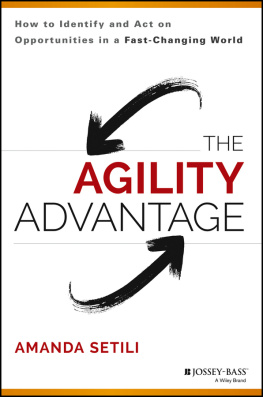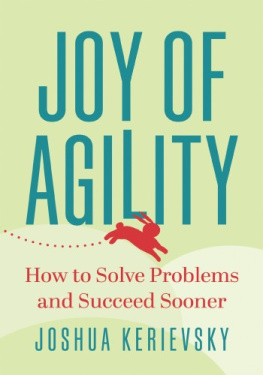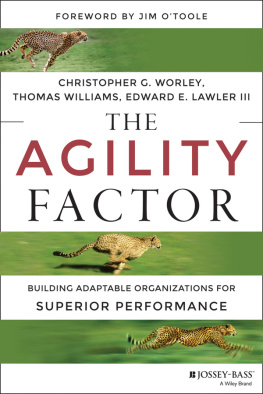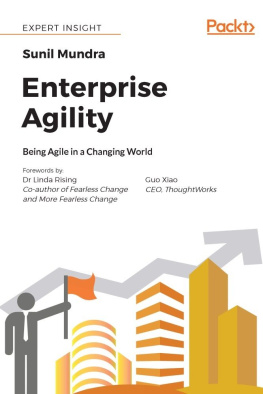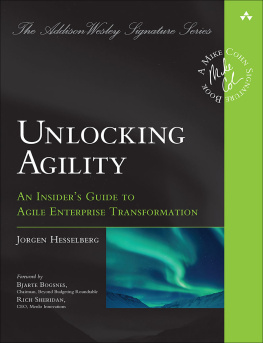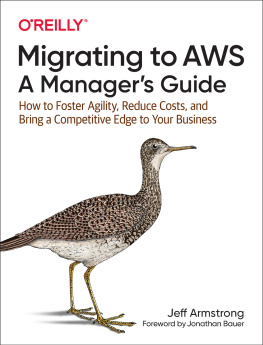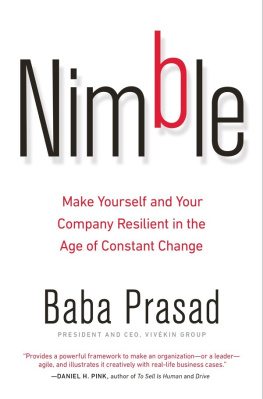
Copyright 2014 by John Wiley and Sons, Inc. All rights reserved.
Published by Jossey-Bass
A Wiley Brand
One Montgomery Street, Suite 1200, San Francisco, CA 94104-4594 www.josseybass.com
No part of this publication may be reproduced, stored in a retrieval system, or transmitted in any form or by any means, electronic, mechanical, photocopying, recording, scanning, or otherwise, except as permitted under Section 107 or 108 of the 1976 United States Copyright Act, without either the prior written permission of the publisher, or authorization through payment of the appropriate per-copy fee to the Copyright Clearance Center, Inc., 222 Rosewood Drive, Danvers, MA 01923, 978-750-8400, fax 978-646-8600, or on the Web at www.copyright.com. Requests to the publisher for permission should be addressed to the Permissions Department, John Wiley & Sons, Inc., 111 River Street, Hoboken, NJ 07030, 201-748-6011, fax 201-748-6008, or online at www.wiley.com/go/permissions.
Limit of Liability/Disclaimer of Warranty: While the publisher and author have used their best efforts in preparing this book, they make no representations or warranties with respect to the accuracy or completeness of the contents of this book and specifically disclaim any implied warranties of merchantability or fitness for a particular purpose. No warranty may be created or extended by sales representatives or written sales materials. The advice and strategies contained herein may not be suitable for your situation. You should consult with a professional where appropriate. Neither the publisher nor author shall be liable for any loss of profit or any other commercial damages, including but not limited to special, incidental, consequential, or other damages. Readers should be aware that Internet Web sites offered as citations and/or sources for further information may have changed or disappeared between the time this was written and when it is read.
Jossey-Bass books and products are available through most bookstores. To contact Jossey-Bass directly call our Customer Care Department within the U.S. at 800-956-7739, outside the U.S. at 317-572-3986, or fax 317-572-4002.
Wiley publishes in a variety of print and electronic formats and by print-on-demand. Some material included with standard print versions of this book may not be included in e-books or in print-on-demand. If this book refers to media such as a CD or DVD that is not included in the version you purchased, you may download this material at http://booksupport.wiley.com. For more information about Wiley products, visit www.wiley.com.
Library of Congress Cataloging-in-Publication Data
Setili, Amanda, 1959
The agility advantage : how to identify and act on opportunities in a fast-changing world / Amanda Setili. First edition.
pages cm
Inclues bibliographical references and index.
ISBN 978-1-118-83638-5 (hardback); ISBN 978-1-118-96444-6 (pdf); ISBN 978-1-118-96443-9 (epub)
1. Strategic planning. 2. Diffusion of innovations. 3. Organizational change. I. Title.
HD30.28.S396 2014
658.4012 dc23
FIRST EDITION
To Rob, Shannon, and Alison
Preface
In 2011, I founded the Strategic Agility Think Tank. My goal in establishing this community of corporate peersCEOs, division presidents, CFOs, CMOs, and leaders in sales, marketing, operations, and strategywas for them to share ideas and best practices, better navigate their greatest challenges, and become more adept at seeing and capturing new market opportunities.
The community includes leaders of such companies as AT&T, AutoTrader, Best Buy, Bosch, Cbeyond, Cisco, Costco, Cox Communications, Equifax, Fiserv, Georgia-Pacific, Hilton, Intuit, Kraft, J. M. Huber, MeadWestvaco, Time Warner, UPS, and Xerox. The members of this group have learned from one another, and I've learned from them. Along the way, they have strengthened their organizational and personal performance, and I've gained moreand more variedexperience in helping companies navigate change.
My aim in writing this book is to help all organizationslarge, established companies with huge investments in the status quo, as well as smaller, younger companies that are relatively light on their feetbecome more nimble. In the pages that follow, you'll find examples, tools, and techniques to do just that.
The Impetus for This Book
I wrote this book after more than two decades of working with some of the world's leading companies, including Coca-Cola, Delta Air Lines, The Home Depot, Kimberly-Clark, and Walmartcompanies that are, for the most part, great at what they do. Over the years, they had honed their operations, refined their products, and developed brands recognized worldwide. Planes ran on time, product flowed to store shelves, diaper innovations kept this year's babies drier than last year's. Yet the very things that made these companies so good at what they didthe hundreds of thousands of employees, the wealth of technology, and the assets spread across the globemade it very difficult for them to respond effectively to change.
Change came in many forms for these companies, and from many different directions at once: deregulation, low-cost competitors, disruptive technologies, housing market ups and downs, private-label products, cultural trendsthe list goes on and on.
In engagement after engagement, I helped my clients deal with the same basic question: How do we identify opportunities for growth, avoid threats on the horizon, and take advantage of market transformations to bring more value to customers and achieve a lasting advantage over our competitors?
What You Can Gain
If your markets are changing, which they almost always are, what can you do to stay ahead? In a word, you cultivate agility. I define agility as the ability to identify new opportunities and capitalize on them quickly. By following the principles, using the tools, and learning from the numerous real-world examples and case studies in this book, you can make your own organization more agileand have change work to your advantage.
In these pages, I'll let you know how you can anticipate change and be prepared for it when it arrives, armed with the repertoire and resources required to deal effectively with what is ahead. You'll learn how to make sound decisions when data is scarce and the future is uncertain; how to navigate, experiment, and motivate when a sharp turn in strategic direction is required; and how to execute in a flexible way, so that you can adjust your course over time as further change occurs.
A Caveat
The companies I showcase in this book each demonstrate traits important for strategic agility. But they don't have it all figured out; no one does. Technological advances, changes in leadership, financial pressures, regulatory changes, and other events will affect theirand yourfuture business success.
The processes and systems you put in place to augment agility sometimes fall by the wayside or become outdated as fortunes change. Many companies are agile at one point in time, but later become rigid and insular. Sears Roebuck showed great agility in the 1950s. It later became one of the most calcified companies in the world, and now has a reputation for being out of touch with the market. Dell pioneered many methods for adapting quickly to market changes; specifically, its just-in-time supply chain innovations and systems for customizing product to meet each individual customer's needs were groundbreaking. However, the company has lost its luster of late. IBM, in contrast, was known as an old-line, hierarchical company, yet has become extremely agile in recent years and transformed itself into a completely different organization than it once was.
Next page
